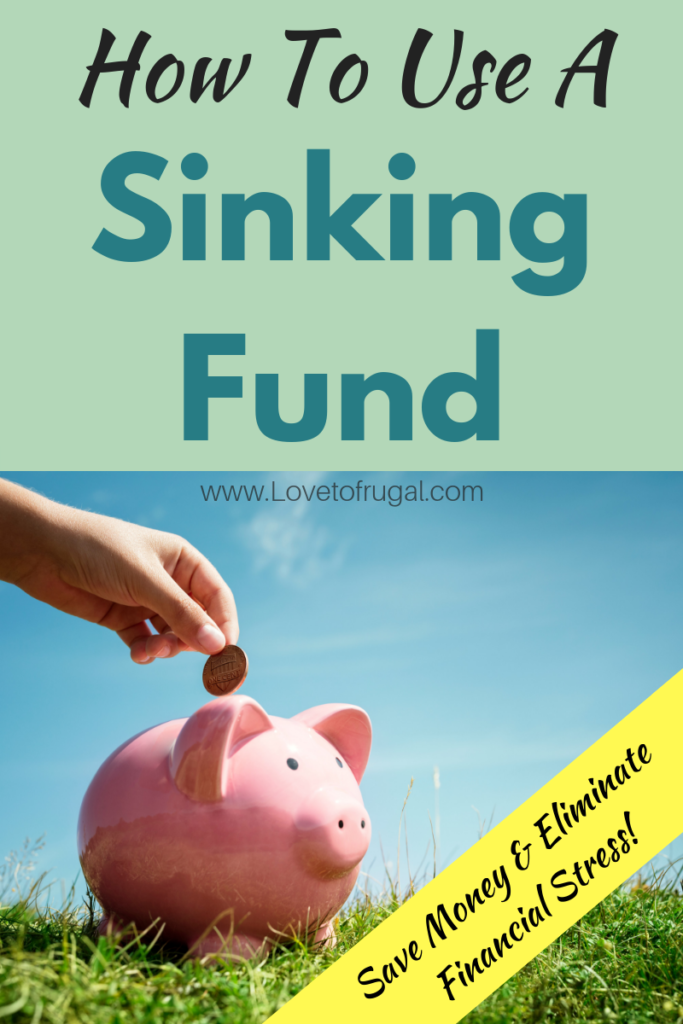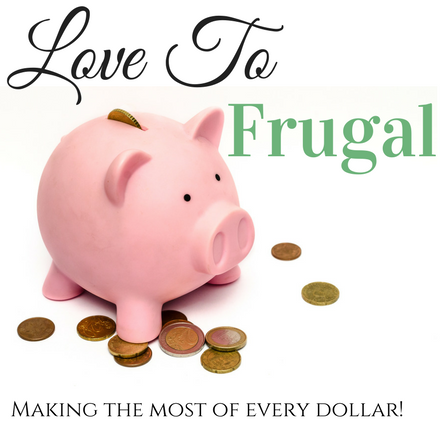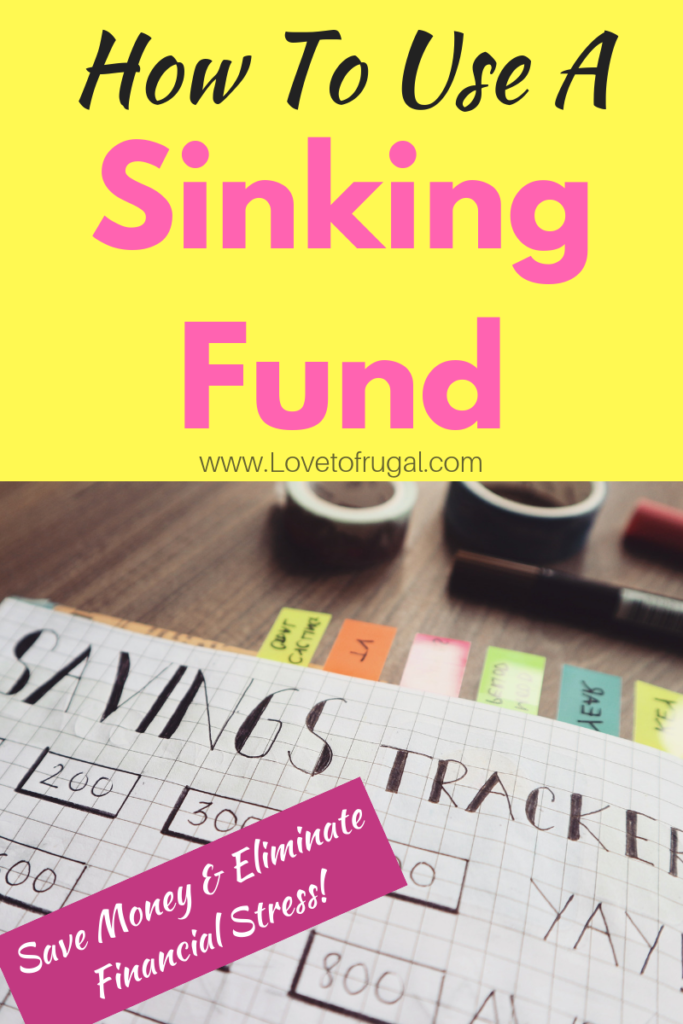How To Use A Sinking Fund and Keep Your Budget Afloat!
One of the best tools that I have in my arsenal for budgeting and saving is a Sinking Fund. Have you ever heard the term, “Sinking Fund”?
Many people that I’ve talked to have never heard of that term, even though many are aware of the concept and have been using this budget friendly, debt fighter strategy for years. I know I have.
Have you ever tried setting a budget and then have it fall apart because you had an expense come up that you failed to plan for (even though you knew it was coming)? I think we’ve all done that. That’s where the Sinking Fund comes in.

What is a Sinking Fund?
Well, a Sinking Fund won’t sink your budget. Quite the opposite! A Sinking Fund is money that you set aside (either weekly, biweekly or monthly) for an expense that will be coming up in the future. A Sinking Fund is a tool that you can use to prepare yourself and your budget for planned expenses.
You can have a Sinking Fund for many things. Some examples of Sinking Funds would be..the biggy…Christmas! We all know when it will come each year and yet so many people are caught off guard! You don’t want to wait until November to figure out how you are going to pay for Christmas. Unfortunately, many do! By the way, credit card companies LOVE this and they count on it! If everyone used this simple strategy of planning ahead using sinking funds, it just might put credit card companies out of business!
Hey! We can dream…cant we?
How Does a Sinking Fund Work?
A Sinking Fund is a very simple concept and it is an incredibly powerful tool. In the past, people used to save up for things they needed. If you know of an upcoming expenditure, like Christmas or maybe car insurance, or planning for a vacation, home renovations, a new(er) car, camp for your kids, taxes, you get the idea. These are perfect examples of things to use sinking funds for. They are NOT emergencies!
The idea is to determine the total amount you would need for the expense.
You will need to figure up how many paychecks you have until you need to make your purchase, then divide the total amount by the number of paychecks (or the number of months you need to save for.)
For example, if you want to spend $800 on Christmas and it’s already May, that leaves you roughly about 7 months. I try to have Christmas saving done by the end of November, because I want to use December to buy my gifts. You must add Christmas as a line item in your budget from here on out. Ideally, it would be best to start in January. It’s a lot less painful if you have a little longer to save.
Anyway, $800 divided by 7 months is $114 a month. If you get paid twice a month, you will need to put $57 a paycheck into your Christmas Sinking Fund. If you would start in January, that would be about $72 a month or $36 a paycheck. That doesn’t seem so hard or painful, does it?
This can be done with literally anything!
Difference Between Sinking Fund, Emergency Fund and Savings
There is a big difference between these three types of funds. A Sinking Fund is for a planned expense. You know what the money is for and when you are going to use it. An emergency fund is typically for unplanned expenses, like a medical emergency, the battery going out in your car, a sudden job loss or any unexpected event that life may throw your way. You will keep from going further into debt by having an emergency fund in place. If the money is already there, there is no need to grab the MasterCard. Therefore, it’s insurance for when life happens.
Savings is the portion of income that is not spent on current expenditures…or to put it another way, the money left over after spending. You can build wealth with your savings. This can be retirement savings, investments in mutual funds, CD’s, etc.
Where to Keep a Sinking Fund
Where to keep your sinking fund(s) depends on what they are for. I have budget envelopes for some of my sinking funds, like automotive repair, Christmas, airline tickets, etc.
With larger expenses, I will move money from one checking account to another. If you’re saving for a car, you may not want that much money laying around. A savings or an extra checking account may be more appropriate for that.
I will note what the money is for in my check register. Keeping notes of your transaction are very important. (Grab Your Free Sinking Fund Savings Tracker, above, to help with this!) Sometimes we have brain farts and can’t remember things, so I write everything down. It just makes life easier and only take a few seconds to do.
How Many Sinking Funds Should you Have?
I would recommend starting off with 1 or 2 funds until you get the hang of it. There isn’t a specific number to this question. You will have a better answer when you sit down with your budget. Then you can determine your needs when you have a good idea of what your financial situation looks like.
A sinking fund is a proactive remedy. You are telling your money what to do instead of waiting for life to happen to you. You can be as broad as you like. If you start with a Christmas fund and a vacation fund, that’s great! When you get the hang of it and have a better understanding of how sinking funds work, you may want to add a car/repair fund, an insurance fund, a home renovation/repair fund, a pool fund, an entertainment fund, etc. The possibilities are endless.
Planning Puts You in Control
Planning for an upcoming expense puts you in control of your money. When you spend impulsively, it’s the other way around and usually puts the credit card companies in control of you and your money. You will have better control of every aspect of your life, especially if you have control of your hard earned money.
Patience is key on your path to success with your money. Saving and planning for something ahead of time will take the stress and worry away and allow you to enjoy the fruits of your hard work. Of course, we have been living in an instant gratification world. Therefore, we may have to do some behavioral modification. My mother use to say “Good things come to those who wait”. I believe this with all my heart. If something’s worth having, it’s worth waiting for. Using credit cards and taking out loans to pay for things will only sink you deeper into debt. By using sinking funds, you’re planning ahead and preparing for the future.
Like the old saying goes, “By failing to prepare, you are preparing to fail”. This applies to many aspects of our lives, especially our finances.
It’s peace of mind…
Most of all, there is no feeling more wonderful than the peace of mind you’ll experience when you don’t have credit card bills following you from one year to the next year or following you home from a wonderful vacation.
Do you use sinking funds and where do they fit into your budget? I would love it if you would leave me a comment and tell me how you use them
PS…I hope you will subscribe to my Love To Frugal blog for more money saving ideas and I look forward to hearing from you! You can also follow me on Pinterest, Instagram & Facebook for even more money saving, frugal living tips!


